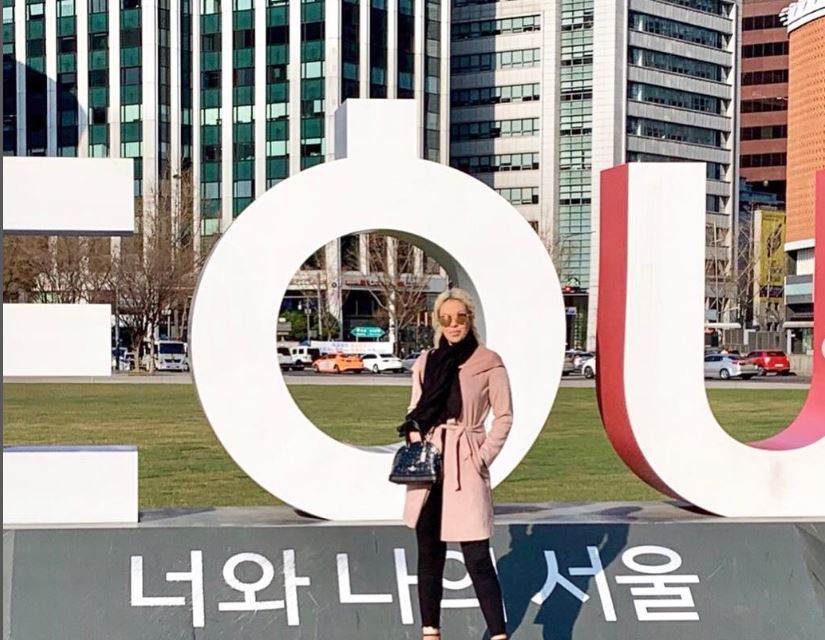Seoul Plaza is located right in front of Seoul City Hall which is one of the most prominent public spaces in South Korea. It has long been a focal point for various cultural events, public gatherings, and community activities. Since its reopening in May 2004, Seoul Plaza has become a symbol of the city’s transformation into a more pedestrian-friendly and vibrant urban centre.
The History and Purpose of Seoul Plaza
Seoul Plaza was initially designed as a traffic square which is surrounded by busy roads and a large fountain that had been in place for over 40 years. In a bid to create a more open and welcoming space for the public, the Seoul Metropolitan Government transformed the area into an elliptical grass-covered plaza. Covering approximately 13,207 square metres, with a central lawn area of 6,294 square metres, the plaza is now a green oasis amidst the urban landscape.
The redesign of the plaza was part of a broader initiative by the Seoul government to improve public spaces and create more environmentally friendly projects. This movement included the renovation of Cheonggyecheon Stream and the creation of Gwanghwamun Plaza, both of which have contributed to Seoul’s image as a city that values its natural and cultural heritage.
Events and Activities at Seoul Plaza
Seoul Plaza is known for hosting a variety of events throughout the year. During the warmer months, it transforms into an outdoor cultural hub, offering events such as concerts, exhibitions, and performances. One of the notable events held in 2024 is the “Seoul Outdoor Library.” This initiative, which opened to the public in April, allows visitors to enjoy reading outdoors in a relaxing environment complete with beanbags, leisure chairs, and lending services. The library is set up not only at Seoul Plaza but also at Gwanghwamun Plaza and Cheonggyecheon Stream, providing a unique experience for both residents and tourists until November.
Winter sees the plaza take on a different form. Every December, the grass is replaced by an ice rink that stays open until February. This has become a popular attraction for both locals and visitors, who can enjoy skating against the backdrop of the city’s skyline and festive decorations. The ice rink has been a staple of Seoul Plaza’s winter activities since its reopening, making it a seasonal highlight for many families.
The Role of Seoul Plaza in Civic and Cultural Engagement
Seoul Plaza is more than just a place for pleasure. It has been the site of several political rallies and public demonstrations, reflecting its role as a space for civic engagement. Over the years, it has hosted protests, including the notable demonstrations against US beef imports in 2008, and has also been a venue for the annual Korea Queer Culture Festival, promoting inclusivity and diversity in the city.
The plaza’s open and accessible nature makes it a prime location for public gatherings and events. Its central position in front of City Hall and its spacious design encourage people to come together, whether for celebration, protest, or cultural events. This aspect of Seoul Plaza helps reinforce its identity as a democratic and community-oriented space.
Architectural and Environmental Features
Seoul Plaza’s architecture and design focus on sustainability and aesthetic appeal. The central lawn is bordered by 48 lighting fixtures that illuminate the plaza at night, creating a visually striking landscape. An underground water tank collects rainwater, which is then used to irrigate the grass, highlighting the city’s commitment to sustainable urban planning.
Additionally, Seoul Plaza is designated as a smoke-free zone, a policy implemented to ensure a clean and healthy environment for visitors. Those found smoking within the plaza’s boundaries can face fines, further emphasising the city’s efforts to maintain a pleasant and safe public space.
Exploring the Surrounding Attractions
Visitors to Seoul Plaza can easily access several of the city’s key attractions. Adjacent to the plaza is Seoul City Hall, an architectural marvel that blends modern and traditional design elements. The Cheonggyecheon Stream, which has been revitalised as part of Seoul’s urban renewal projects, is only a short walk away. This 11-kilometre-long stream offers a peaceful setting amidst the bustling city and is a favourite spot for both locals and tourists.
Gwanghwamun Plaza is another major public space in the area. It is known for its historic significance and cultural events. It features statues of King Sejong the Great and Admiral Yi Sun-sin, two of Korea’s most revered historical figures. The plaza is also home to the Sejong Center for the Performing Arts, which regularly hosts performances ranging from traditional Korean music to modern theatre.
Visiting Seoul Plaza: A Must-See for Tourists
Seoul Plaza’s central location, rich history, and diverse range of activities make it a must-visit for anyone exploring the city. Whether you’re interested in the cultural events, the seasonal ice rink, or just looking for a spot to relax amidst the city’s skyscrapers, Seoul Plaza offers something for everyone.
If you’re visiting in the warmer months, make sure to check out the Seoul Outdoor Library and enjoy a leisurely read on the lawn. During winter, lace up your skates and hit the ice for a memorable experience under the city lights. The plaza’s ability to transform with the seasons ensures there’s always something new to discover.
